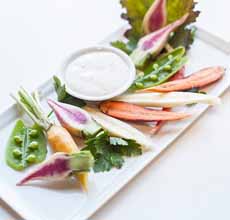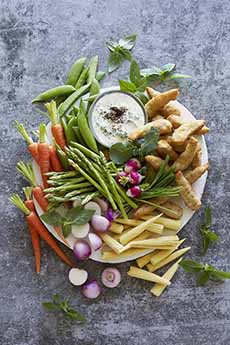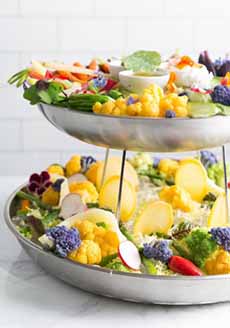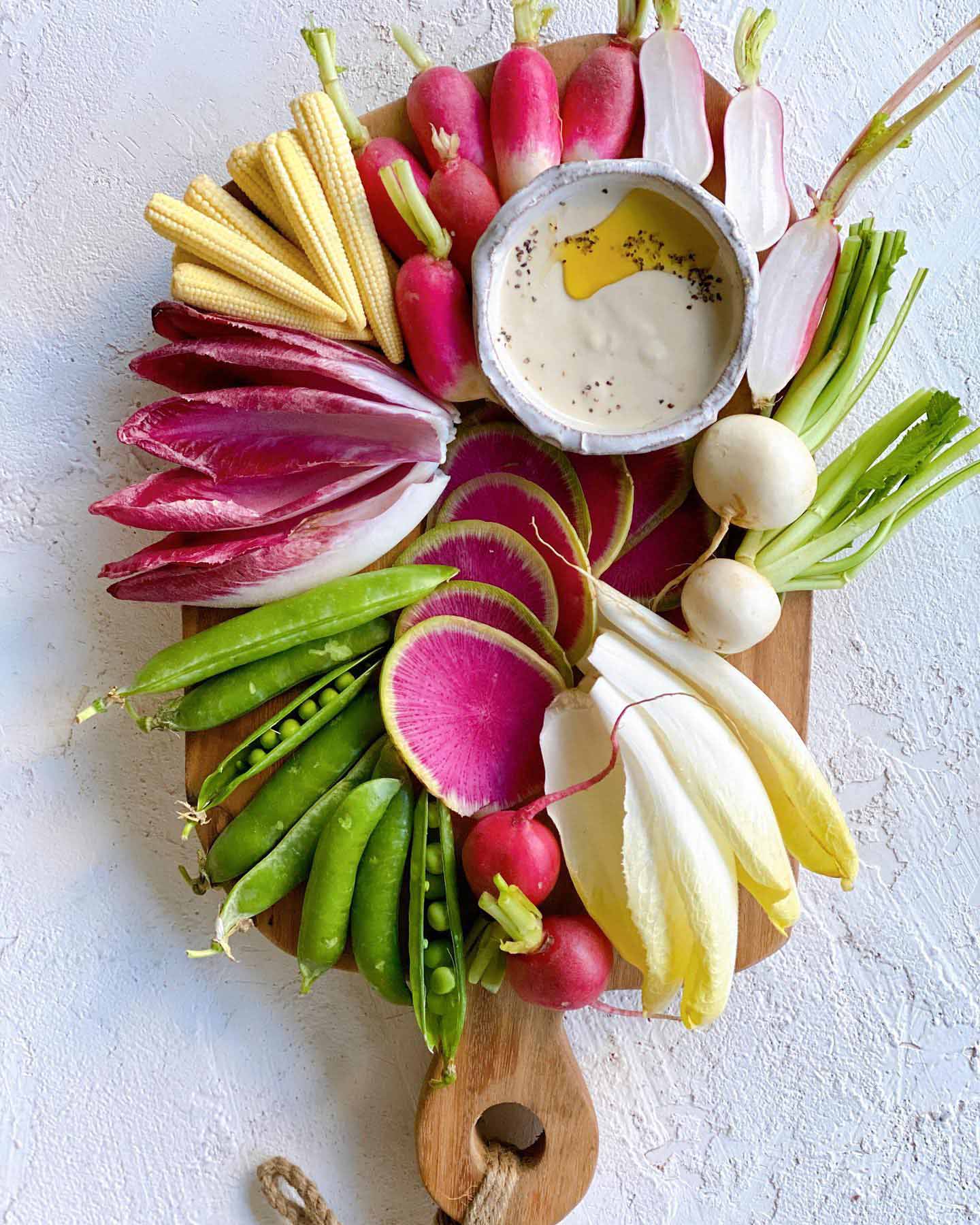TIP OF THE DAY: Summer Crudités & The History Of The Relish Tray
|
When we were in college, we first learned that our Nana’s “relish tray”—carrot and celery sticks, radishes, olives (photo #3)—could be elevated to something our friend Carolyn—who had spent her junior year abroad in Paris—called crudités.
At a dinner one day, she served what we now know as a crudités plate, artfully cut and arranged. The French, she said, turned raw vegetables of every description into a platter of vegetables that are a visual delight. There was no creamy dip, but a vinaigrette with minced fresh herbs. We fell hard for crudités and have prepared them for our company ever since (although creamy dips do appear). In the summer, we go for whatever we can find in the farmers market: heirloom cherry tomatoes, red carrots, purple and orange cauliflower, quartered Green Zebra heirloom tomatoes (or any good-looking heirloom variety)… But to give credit where credit is due, our contemporary, seasonal crudités plate began with Nana’s now-retro relish tray. People in the earliest civilizations no doubt ate raw vegetables, perhaps with a condiment dip—olive oil? garum? tahini? But what stood for a relish tray in Colonial America were dishes of actual relishes—corn relish, cranberry sauce, pickle relish, etc.—served with meals as condiments for the meats. Over time, the definition of “relish” expanded. By 1923, The Encyclopedia Of Food by Artemas Ward defined relishes as “a term flexibly applied to pickles, small fish variously preserved, and a number of other dishes intended to stimulate appetite.” The relish tray had become a variety of tidbits arranged on a platter. It was a small course before dinner—with drinks when entertaining and holiday and other special family meals. But it wasn’t until the 1930s, with the advent of home refrigerators, that relish trays became a mainstay. Says a 1988 article in the Chicago Tribune, “It didn’t take Better Homes and Gardens long to figure out that cooks could prepare small batches of pickles and relishes well ahead of dinnertime and store them.” The magazine featured recipes for pickled carrot sticks and cranberry relish. They taught housewives to create their own pickles, instead of buying them from the barrel at the corner store. These ideas came from the home economists—Fanny Farmer and other women started as cooks, schooled in nutrition and the home arts. They worked in the background at women’s magazines, brand manufacturers, and cookbook publishers, to devise and test recipes to make housewives’ cooking more interesting. They developed the recipes printed on the package labels and featured in brand advertisements—recipes that housewives eagerly sought and prepared. Recipes that became iconic, from seven-layer dip to Key lime pie. Green bean casserole made with canned mushroom soup from the soup manufacturer. How to use grape jelly for a sauce, from the jelly manufacturer. Velveeta and Ro-tel dips. And on and on. At some point, no doubt, a home economist put together the ingredients for the relish trays of the 1940s. By the 1940s, relish trays made of silver or cut glass were standard in dining-room china cabinets [source]. Our Nana, a very proper lady, had two: a rectangular boat shape, and a round plate divided into pie-shaped sections, to even more elegantly separate the tidbits. (We still have both of those plates, albeit “stored away somewhere.”) By then, the “modern” relish tray ingredients had become somewhat standard. These were decades to conform, not to seek creative alternatives. The relish tray of the day included: It was fare to enjoy with drinks and social talk until all participants had arrived. By the 1950s, when the American restaurant culture became mainstream, the relish tray was placed on the table along with the bread and butter: a way to satisfy the hungry diners before their orders arrived. “At home, however,” says the Chicago Tribune, “the relish-tray tradition began to decline.” We entered the era of frozen food, and no one manufactured a frozen relish tray. But by 1970, California cuisine was on the rise. We began to eat raw vegetables beyond carrots, celery, and radishes. Hello, raw broccoli, Brussels sprouts, cauliflower, green beans, sugar snap peas, and zucchini. Throw in some salad ingredients: bell peppers, cherry tomatoes, and cucumbers. And that’s what we were serving when we learned about crudités. (Might we note that along with the raw vegetable tray came creamy dips: the onion dip on the soup package label, the spinach dip on the frozen spinach package, the artichoke dip on the sour cream package label…). Since then, we’ve learned to eat seasonally. And we just love raw corn, purple broccoli, heirloom tomatoes, and yellow squash as summer crudités. |
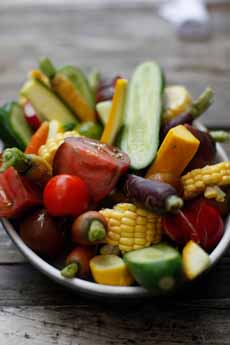 [1] Summer crudités from the seasonal bounty. You don’t have to cook the corn: Raw corn is delicious (photo © Good Food Kitchen).
|
|
|
CHECK OUT WHAT’S HAPPENING ON OUR HOME PAGE, THENIBBLE.COM. |
||
